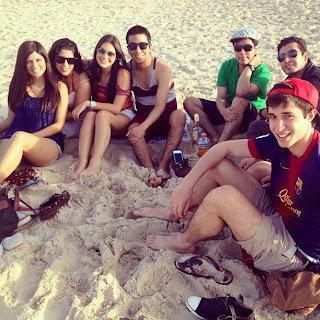The concept of Brazilian Time does not compute for the
average American upon arrival to Brazil. It’s similar to Colombian time, in
that when you are invited to a party at eight and you get to said party before
around ten, you’re going to look like a fool. For Americans, who in Latin
America and Brazil have somewhat well-deserved reputation for being
outrageously punctual, this can be catastrophic. Specifically, one of my
friends Trey, a fellow Texan, found himself waiting over two hours at a going
away party for even just the guy who was leaving to show up. For me Brazilian
time wasn’t much of an issue, my family in Colombia works the exact same way.
We are late to most things where arriving on time is not imperative.
Some might
argue that this is the reason why Latin American and Brazilian economies
require so much more development to reach the levels of first world countries,
but I think its merely more indicative of a more relaxed culture, a culture
where events are open, with arrival and departure times that are practically
optional. Parties rarely end before three or four am and almost never end when
the invitation says it will. It’s what Colombians call “relajo,” an enjoyable
chaos, and its one of the best parts of going abroad.



.JPG)
.JPG)
.JPG)
.JPG)
.JPG)

